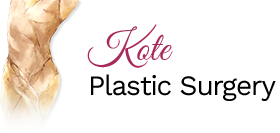Introduction
Liposuction, also called body contouring and lipoplasty is a type of cosmetic surgery that involves extraction and removal of fat from specific areas in your body such as the belly or abdomen, back, buttocks, thighs, arms, chin, and neck. It uses a suction technique to remove body fat and helps shape the targeted areas.
However, you will need to maintain your weight after the procedure in order to see long term results.
Liposuction is not a weight-loss procedure, nor does it remove stretch marks from weight gain. It is usually recommended if you already have a healthy body weight but are unable to lose fat in specific parts of your body despite proper diet and exercise.
Indications of Liposuction
- Your doctor may recommend liposuction if you have an overall stable body weight but excess body fat in specific areas.
- Liposuction can also be used for breast reduction or treatment of gynecomastia, enlarged male breasts.
- Liposuction is not recommended if you have poor health or conditions such as diabetes, coronary artery disease, and immune disorders.
Surgical Procedure of Liposuction
Before liposuction, your surgeon will mark the specific areas of your body to be treated. Photos are usually taken to compare before and after surgery results.
Some procedures may require general anesthesia, while others may require regional or local anesthesia.
The different types of liposuction procedures include:
Tumescent Liposuction: In this procedure, your surgeon injects a sterile solution of saltwater, anesthesia, and a vasoconstrictor – a drug that narrows your blood vessels, into the area from where the excess fat needs to be extracted. The injection causes swelling and stiffening of the affected area.
- Then your surgeon makes tiny incisions into your skin and inserts a thin tube called a cannula under your skin. The cannula is connected to a vacuum that pulls fluids and fat from your body. The body fluids are replenished through an intravenous (IV) line in your arm.
- This is the most common type of liposuction.
Ultrasound-Assisted Liposuction (UAL): In this procedure, your surgeon inserts a metal rod into your skin. The rod emits ultrasonic energy that breaks up the fat cells and makes fat removal easier.
- This type of liposuction may sometimes be used in combination with tumescent liposuction.
- A new generation of UAL called VASER-assisted liposuction uses a device that can reduce the chances of skin injuries and improve skin contouring.
Laser-Assisted Liposuction (LAL): In this procedure, your surgeon inserts a high-intensity laser fiber through a small incision in your skin. This breaks down the fat cells and they are removed through a cannula.
Power-Assisted Liposuction (PAL): In this procedure, your surgeon uses a cannula that moves in a rapid back-and-forth motion. This generates vibrations that allow your surgeon to extract resistant fat more easily and quickly with improved precision. This procedure is less painful and minimizes post-procedure swelling.
- Your surgeon may select this technique if large volumes of fat need to be removed or if you have previously undergone liposuction.
Postoperative Care for Liposuction
- After the procedure, your surgeon may place temporary drains from the incisions to remove excess fluids.
- You will likely develop some swelling, pain, and bruising after the procedure. Your surgeon will prescribe medications to minimize pain and antibiotics to reduce the risk of infection.
- You may be required to wear tight compression garments for a few weeks to help reduce swelling while you heal.
- You should wait a few days before you resume exercise or return to work.
- You should arrange for someone to drive you home and stay with you for at least 24 hours after the procedure.
- Eat a healthy diet to promote healing.
Risks and Complications of Liposuction
As with any major surgery, liposuction carries certain risks and complications. These include:
- Reaction to anesthesia.
- Irregularities in the skin surface such as a bumpy or withered appearance.
- Fluid accumulation under the skin.
- Numbness.
- Skin infection.
- Puncture of an internal organ.
- Fat embolism- Pieces of loosened fat may become entrapped in a blood vessel.
- Kidney and heart problems.
Summary
Liposuction, also called body contouring, is a type of cosmetic surgery that involves the removal of fat cells from specific areas in your body such as your belly, buttocks, thighs, arms, chin, and neck through a suction technique. It helps shape the targeted areas and improves your physical appearance. Although it is usually safe, you may experience certain complications such as wrinkly






